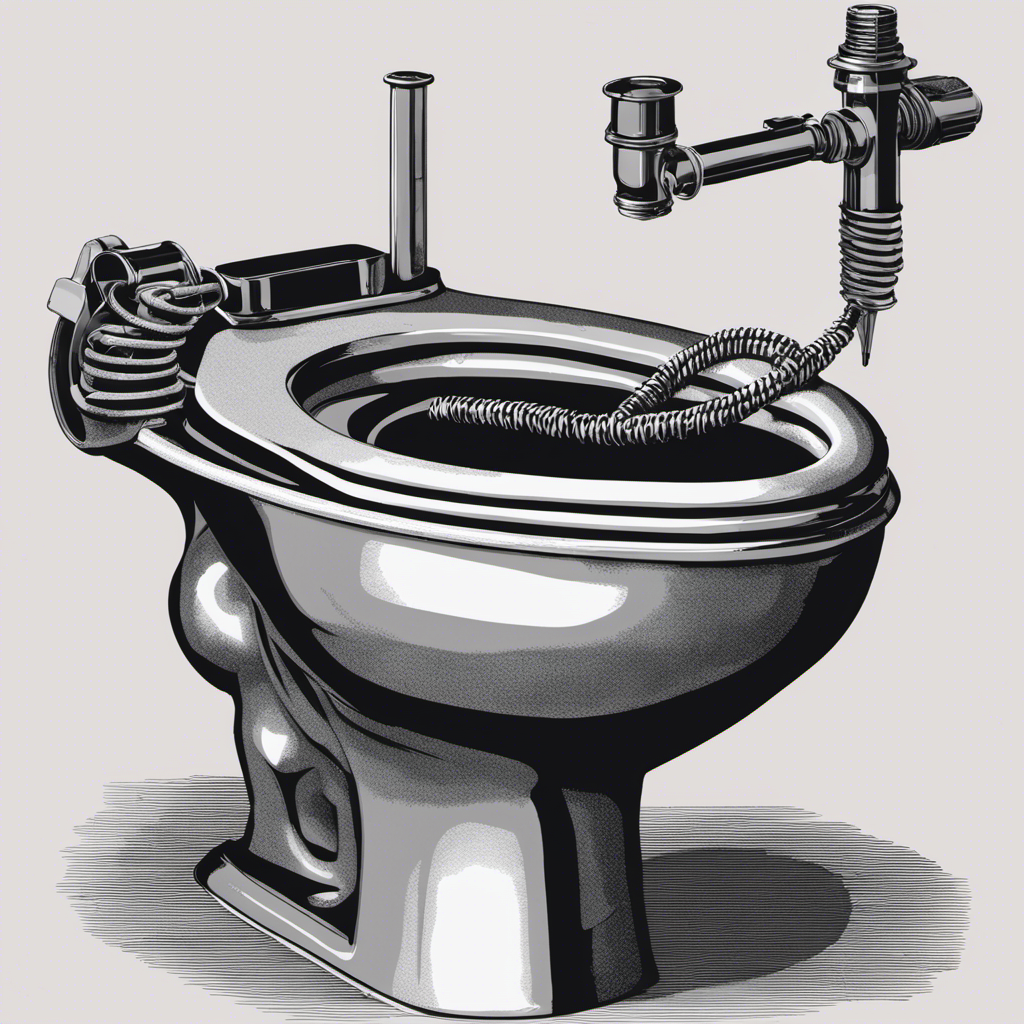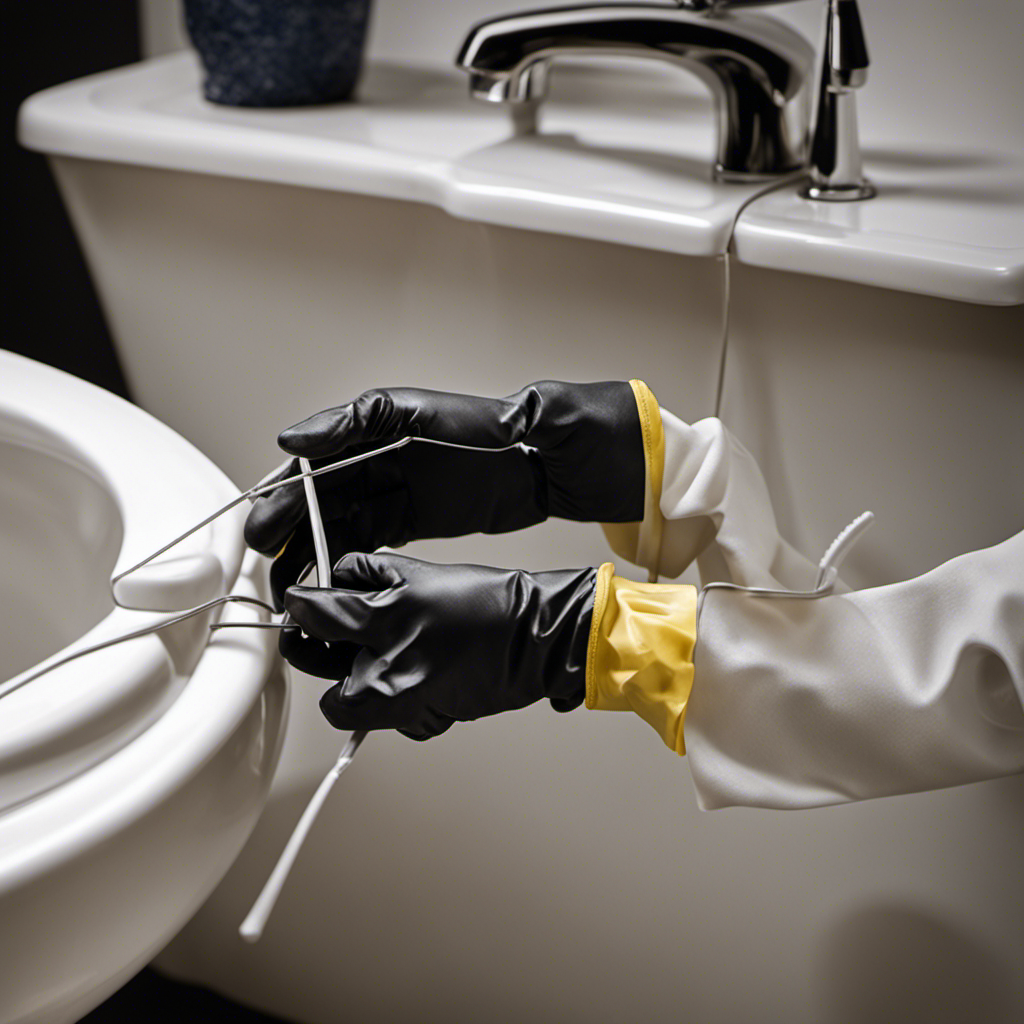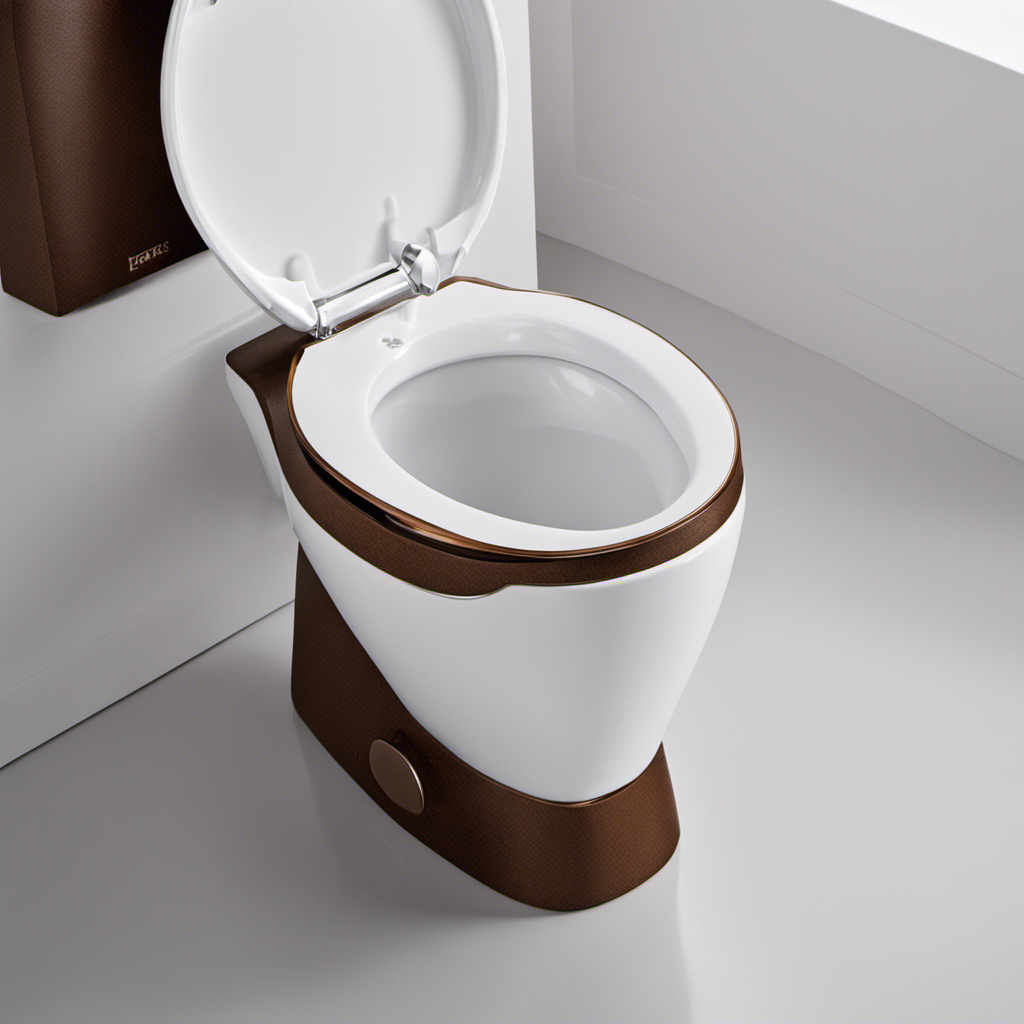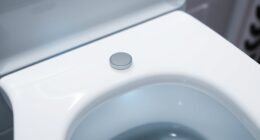I’ve got a trick up my sleeve that will save you from the dreaded clogged toilet blues. Let me show you how to use an auger to unclog your toilet with ease.
In this informative guide, we’ll dive into the different types of augers and their features. We’ll discuss safety precautions to take before diving in and provide a step-by-step guide to preparing your toilet for auger use.
Get ready to tackle those stubborn clogs head-on and bid farewell to toilet troubles.
Key Takeaways
- Augers are more effective than plungers in clearing stubborn blockages.
- Augers can break up and remove obstructions completely without damaging the toilet.
- Augers are less likely to cause harm compared to chemical cleaners.
- Augers offer increased power and versatility compared to plungers.
Understanding the Auger: Types and Features
To understand the auger better, you’ll need to know the different types and features it comes with.
Augers come in various sizes, ranging from handheld to larger, more powerful models. The size of the auger you choose depends on the severity of the clog and the size of your toilet.
The benefit of using an auger over other unclogging methods is its effectiveness in clearing stubborn blockages. Unlike plungers, which may only push the clog further down the pipes, an auger’s rotating cable can break up and remove the obstruction completely.
Additionally, augers are less likely to damage your toilet compared to harsh chemical cleaners.
Now that you understand the types and benefits of using an auger, let’s discuss the necessary safety precautions before using one.
Safety Precautions Before Using an Auger
Before starting, it’s important to take some safety precautions. Preventing accidents should be our top priority when using an auger to unclog a toilet. Here are three essential safety measures to consider:
-
Wear protective gloves: It’s crucial to protect your hands from any potential harm or bacteria. Rubber gloves are highly recommended to provide a barrier between your skin and any waste materials.
-
Use eye protection: Splashing or spraying can occur during the unclogging process, so wearing safety goggles or glasses is vital to shield your eyes from any debris or chemicals.
-
Keep the area well-ventilated: Ensure there is proper airflow in the bathroom by opening a window or turning on the exhaust fan. This helps prevent the buildup of harmful gases or unpleasant odors.
Taking these safety precautions will help create a safer environment while using an auger. Now, let’s move on to the step-by-step guide to preparing the toilet for auger use.
Step-by-Step Guide to Preparing the Toilet for Auger Use
Now, let’s take a look at how we can get the toilet ready for using the auger.
Before using a toilet auger, it’s important to ensure that the toilet is prepared properly.
Start by putting on a pair of rubber gloves to protect your hands from any potential mess.
Next, remove any excess water from the toilet bowl using a small cup or bucket. This will prevent any splashing when using the auger.
Once the water level is lowered, insert the auger into the toilet drain and slowly rotate the handle in a clockwise motion. This will help to break up any clogs and allow the auger to move freely through the drain.
If necessary, repeat the process until the clog is fully cleared.
Inserting and Maneuvering the Auger in the Toilet Drain
Once you’ve put on your rubber gloves, it’s time to insert and maneuver the auger in the toilet drain. Follow these maneuvering techniques to effectively unclog your toilet:
-
Insert the auger: Carefully lower the auger into the toilet bowl, ensuring that the curved end is facing the drain. Gently push the auger down until you feel resistance.
-
Rotate the handle: With a firm grip on the handle, slowly rotate it in a clockwise motion. This rotation helps to break up the clog and clear the blockage. Be patient and avoid applying excessive force.
-
Adjust the angle: If you encounter a stubborn clog, try adjusting the angle of the auger. Tilt it slightly to the left or right to target different areas of the drain. This can help dislodge the obstruction and restore the flow.
When maneuvering the auger, keep in mind some common obstacles such as tight bends or obstructions in the toilet trap. Gentle, steady movements combined with these techniques can effectively unclog your toilet.
Techniques for Breaking up and Removing the Clog
When it comes to unclogging a toilet, there are two main tools that can be used: an auger and a plunger.
The auger is a flexible cable with a corkscrew-like end that helps break up and remove stubborn clogs, while the plunger uses suction to dislodge the blockage.
To properly use an auger, start by inserting it into the toilet drain and rotating the handle clockwise.
It’s important to take safety precautions while unclogging, such as wearing gloves and eye protection, and being cautious not to damage the toilet bowl or plumbing pipes.
Auger Vs. Plunger
To determine which tool is more effective for unclogging your toilet, you should consider the differences between an auger and a plunger. Here are three reasons why using an auger can be a better option:
-
Increased power: An auger, also known as a plumbing snake, has a long, flexible cable that can reach deep into the pipes to break up stubborn clogs. This extra power allows it to handle tougher obstructions that a plunger may struggle with.
-
Versatility: Unlike a plunger, which is primarily designed for clearing blockages near the toilet bowl, an auger can be used to unclog toilets, sinks, and even bathtub drains. Its versatility makes it a valuable tool to have in your home.
-
Prevents mess: When using a plunger, there is a risk of water splashing out of the toilet bowl, creating a messy situation. On the other hand, an auger allows you to work directly on the clog without the risk of water splashing, keeping your bathroom clean and tidy.
Considering these benefits, it is clear that using an auger can be a more effective and versatile option when dealing with toilet clogs.
Proper Technique for Auger
The proper technique for using an auger involves feeding the cable into the drain and turning the handle clockwise to break up the clog.
To start, insert the auger cable into the toilet bowl and push it in until you feel resistance. Once you encounter the clog, slowly rotate the handle in a clockwise motion. This will help the auger’s cable to grip the blockage and break it apart. Be careful not to apply too much force, as it could damage the plumbing.
As you continue to turn the handle, gradually pull the cable out. This action will bring the clog with it, effectively unclogging the toilet. Remember to clean the auger thoroughly after use to prevent any spread of bacteria.
Now that you know the proper technique, let’s move on to safety precautions while unclogging.
Safety Precautions While Unclogging
One important safety precaution while clearing a blockage is to wear protective gloves to avoid any contact with potentially harmful substances.
When it comes to unclogging a toilet, using a toilet auger is an effective method. However, there are also alternative methods to consider if you don’t have an auger on hand.
Here are three ways to unclog a toilet without an auger:
-
Plunger: A plunger is a common tool used to unclog toilets. It creates suction and pressure to dislodge the blockage.
-
Hot Water and Dish Soap: Pouring hot water mixed with dish soap into the toilet bowl can help break down the clog and allow it to flow through.
-
Baking Soda and Vinegar: Mixing baking soda and vinegar creates a chemical reaction that can help dissolve the blockage. Pour the mixture into the toilet bowl and let it sit for a while before flushing.
While a toilet auger is effective, these alternative methods can be used in a pinch to unclog your toilet.
Troubleshooting Common Issues While Using an Auger
Make sure you’re applying enough pressure while using the auger to avoid any unnecessary clogs or blockages. Troubleshooting techniques are essential to address common issues that may arise while using an auger. Here are some common mistakes and their solutions:
| Problem | Possible Cause | Solution |
|---|---|---|
| Auger not advancing | Insufficient pressure | Apply more downward force |
| Auger getting stuck | Debris or obstruction | Rotate the auger in both directions |
| Auger not reaching clog | Wrong length of auger | Use a longer auger |
Proper Maintenance and Storage of Your Auger
Properly maintaining and storing your auger is essential for ensuring its longevity and optimal performance. Here are some important tips to keep in mind:
-
Regular Cleaning: After each use, make sure to clean the auger thoroughly. Use a cloth or paper towel to remove any debris or residue that may have accumulated. This will prevent any build-up that can affect the auger’s effectiveness.
-
Storage: Find a dry and clean space to store your auger. Avoid exposing it to extreme temperatures or moisture, as this can lead to rust or damage. Hang it on a hook or place it in a sturdy container to prevent any bending or breaking.
-
Troubleshooting: If you encounter any issues while using the auger, such as it getting stuck or not unclogging the toilet properly, refer to the previous subtopic on troubleshooting common issues with toilet clogs. It will provide you with valuable insights and solutions to overcome these challenges.
Conclusion
In conclusion, using an auger to unclog a toilet is a simple yet effective solution. By understanding the different types and features of augers, taking necessary safety precautions, and following a step-by-step guide, you can easily tackle any clog.
Remember to maneuver the auger carefully and use proper techniques to break up and remove the clog. Troubleshooting common issues and maintaining your auger properly will ensure its longevity.
So next time you face a stubborn clog, don’t panic – grab your auger and get to work, because a clear and functional toilet awaits.










